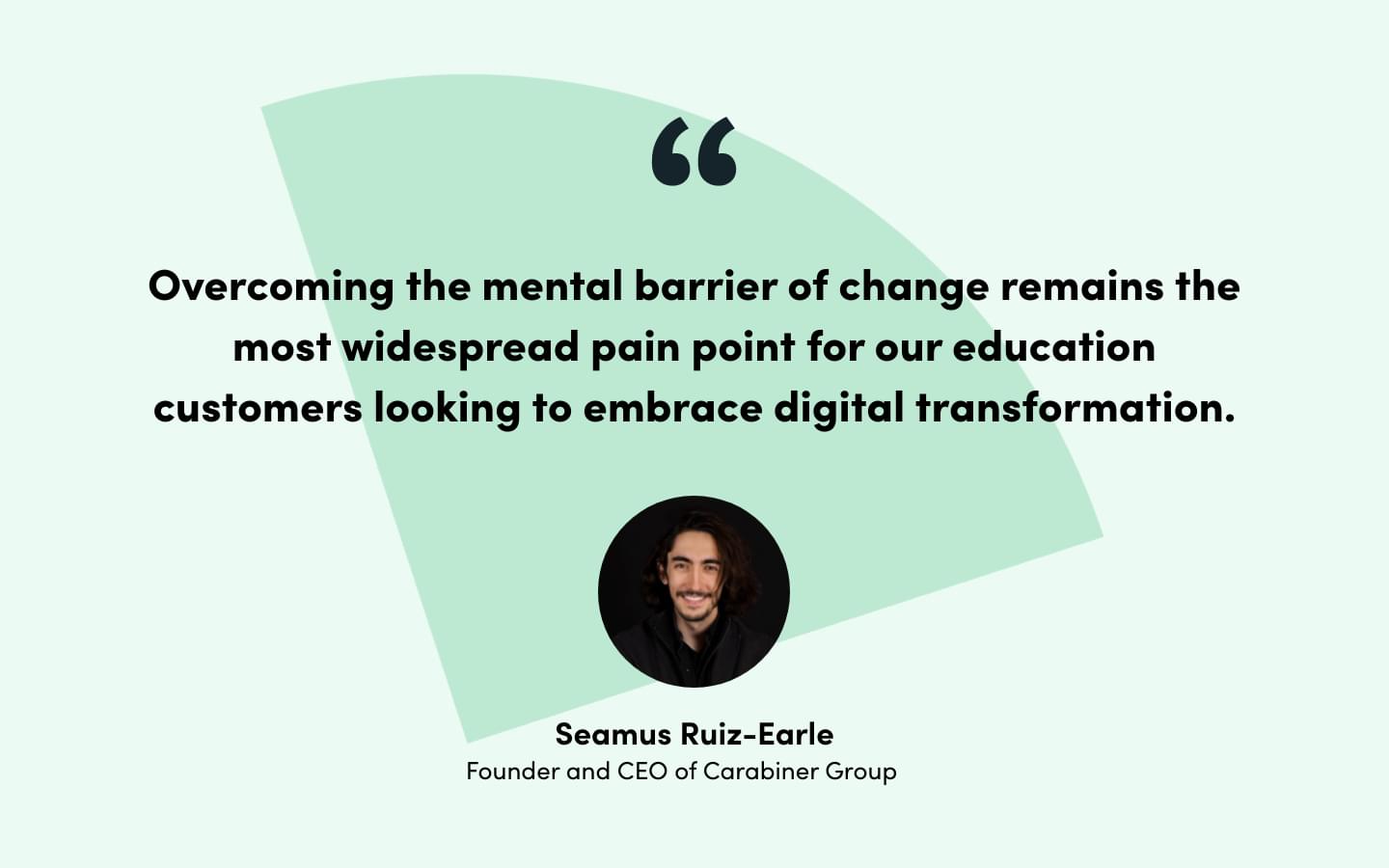Since 2020, the Education industry has been in flux. Digitization plans were hastily thrown together to keep students learning and prospects in the pipeline. However, with the pandemic waning, now is the time to ensure your education customers have the knowledge, tools, and insights they need to put true efficiency and digitization into play at their institutions.
Virtual classrooms and online lessons are becoming standard, but that’s not enough to keep ahead of the competition. Everything from housing requests, financial aid, student applications, tutoring sign-ups, scheduling, and more can—and should—be brought into online spaces to ensure you’re offering customers and students the digital experience they expect—and need. But that’s just the tip of the iceberg.
To delve into these and other trends in education digitization in 2022 and beyond, we reached out to a panel of experts from Formstack’s consulting and technology partners to discover how you can transform the way you do business going forward to keep your education partners at the top of their class.
Going Beyond the Classroom
With virtual classrooms all but becoming a standard option at many institutions, Brent Mellow, President and CEO of akaCRM, notes that we need to think beyond that. “Hybrid learning and online learning are taking off faster than ever. Schools without fully remote programs will need to consider these options to keep up.”
More and more businesses are going remote, and schools aren’t far behind. With teachers being able to instruct from anywhere—and students able to attend from around the world—the institutions that think big now may just well come out on top.

Patrick Yurgosky, President of Yurgosky, agrees that more campuses are coming. “Schools will have campuses in other countries, like higher ed.” Think of the possibilities that opens up as far as potential student enrollment, faculty acquisition, and increased revenue. “Multi-faceted teaching, where lessons are taught by multiple subject-matter experts remotely,” Patrick continues, could change the face of education.
However, your customers can’t admit more students and open themselves up to the world unless they’re prepping now for the technology they’ll need to do it.
Making Digitization Your Strategy
While learning outcomes are always paramount to schools, they will have to put digitization first if they want to actually achieve the outcomes they seek. Patrick recommends allocating money and time to make these goals a reality. He shares that 10% of your budget should be spent on your efforts to go digital. But you’ll only see results if you have true buy-in from CEOs, executive boards, management, and more.
To get that buy-in, set expectations. Patrick says, “Digitization…will help break down data silos, reduce confusion, allow you to manage more people, and keep things running smoothly. Digitization speeds up and codifies your workflow data.” Showcasing these benefits opens the door to discussion and bringing it forward to a wider audience for input—and you will need that larger buy-in if you’re going to have a successful digital transformation.
“Workflows and processes are most prevalently manual in nature, and tenured faculty and staff are comfortable with this status quo,” Seamus Ruiz-Earle, Founder and CEO of Carabiner Group, said. “Overcoming the mental barrier of change remains the most widespread pain point for our education customers looking to embrace digital transformation.”

To change this mindset, you’ll have to showcase the exact benefits and time saving impacts going digital will have directly on them. Lara Alderson, Director of Education Solutions Practice at Coastal Cloud, recommends “identifying areas of opportunity for ‘quick wins’ to gain institutional buy in to help manage the process of change. Additionally, gaining an understanding of the overall digitalization roadmap, then prioritizing workable phases for implementation, will foster a more consumable process. Engaging neutral partners to help identify opportunities for success, developing a workable institution-specific roadmap that meets institutional needs, and guiding decision-making with recommendations grounded in best practices can be an enormous asset towards digitization.”
If you can do that, you can create a grassroots movement where faculty, staff, and leaders actually champion transformation and rally support from the organization because they see the value. And once they’re onboard, it can truly set the stage for also getting them to start actively tracking and analyzing how many systems they have versus how many they actually need and use, which is the next step to becoming truly efficient.

Auditing Your Software, Processes, and Partners
How many systems and processes do students have to interact with? What about faculty? Parents and caregivers? Are there points of friction that slow down the process or frustrate end users and customers?
A lack of attention to these customer experience touch points could be the downfall for education institutions in coming years. So fixing them has to be a priority now.
That means institutions need to start auditing every system in use and tracking time spent versus outcomes reached. Are employees and students stuck entering the same data over and over again because systems don’t talk? Are departments not able to access the info they need because it’s housed somewhere else?
In many cases, this will mean consolidating software, retiring systems, and looking for new partners who can offer more customizable options and tools for less money. Patrick knows this first hand. “Our customers are all unique, so they require custom solutions, but the right partner can navigate the intricacies of what is custom and what can be done off the shelf. Invest in the right partner that balances customization and purchasing pre-built applications.”
Nancy Cooper, CEO of Servio Consulting, LLC, agrees, adding that in the future, “data management exercises, CRM readiness (willingness to streamline processes), and willingness to adopt digital communication with prospects and students” will be a key determining factor in whether the educational industry is able to digitize and prepare itself for the years ahead.
Getting Rid of Tech Debt
One trend Lara is seeing in higher education institutions is “the current level of technical debt. Institutions are striving to become more efficient, which requires more efficient tech stacks with a single source of truth and transparency and access to data across the institution.”
She adds that historically, “institutions have had to piece solutions together to meet the changing needs to serve constituents, track data, monitor progress, manage operations, etc.” This can increase costs dramatically because of how many systems the university ends up paying for.
Yet, she notes that technology exists today that empowers universities to “streamline their solutions to minimize silos for greater operational efficiency and true digital transformation.”
So universities and others in the education industry should not have to go into debt to have systems communicate with each other, provide good data workflows, and create personalized customer experiences. Instead, they should look for automated workflow solutions that do the work of multiple systems, which results in faster processing times, less manual data entry, better communication, and improved student outcomes.
To learn more about Formstack or any of our education partners and the solutions they offer, check out our Partner Page.











